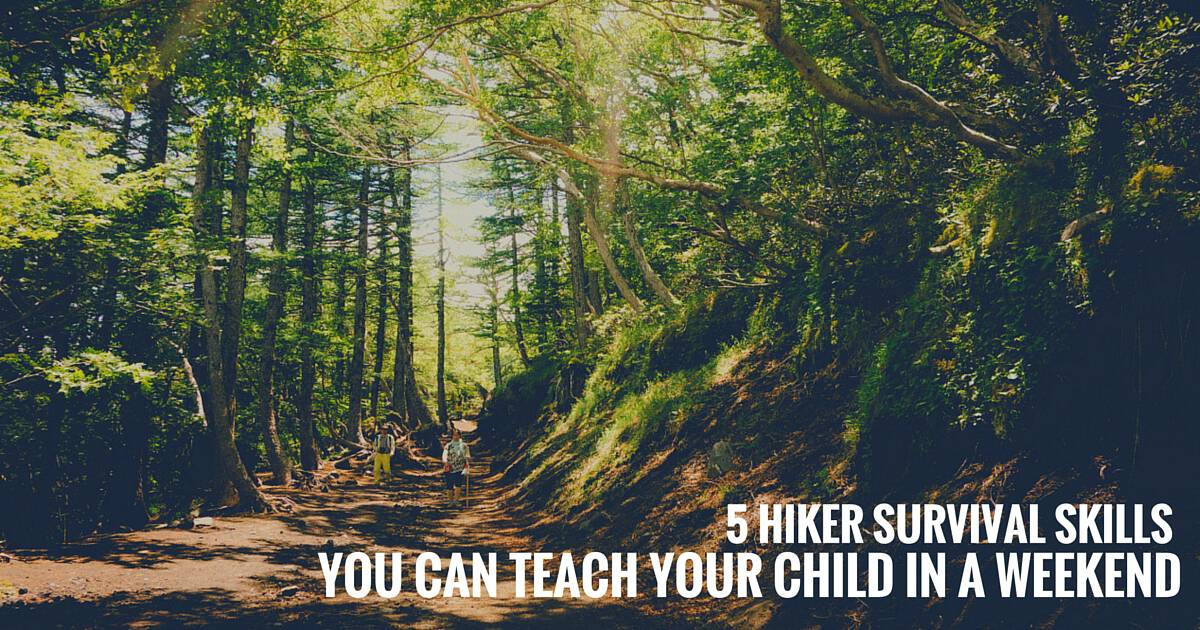
There has been a surge in the popularity of long-distance hiking. The Appalachian Trail Conservancy lists statistics of those who attempted a thru-hike of the 2,100-mile trail by decade, and the numbers have increased from only 14 thru-hikers in the 1950s to over 4,000 thru-hikers in the last decade.
Family Camping For Parents: How To Teach Kids Outdoor Skills
If your child has expressed interest in hiking and the outdoors, here are some simple skills that everyone on the trail and in the back country needs to know.
Start A Fire
Hikers are encouraged to carry at least two methods of starting a fire. Most people carry a lighter and some waterproof matches. You can also carry flint and steel. However, these methods can fail if rain or snow has saturated all available tinder.
Your child should know that human hair, pocket lint and even Doritos make excellent fire starters. Some hikers make their own starters from dryer lint and paraffin melted into a small brick. If your child ever needs to start a fire for warmth, protection from predators, or to signal for help, he or she should know how to start, manage, and extinguish a fire safely.
Maintain Body Heat
Exposure and hypothermia are real threats to hikers, especially those who get lost wearing only light day clothes. Even getting hit with bad weather while unprepared can place your child at risk. Discuss the importance of staying dry and finding natural insulation. In warmer weather, stuffing leaves into clothing and creating a blanket of sorts from dry pine boughs can be enough to keep a child comfortable through a mild night. A poncho or emergency blanket that folds up small should be included in their hiking gear, no matter how tiny their pack. Your child should also know that they need to be protected from the cold of the ground by lying down on leaves or pine boughs, if at all possible, to retain body heat.
Find an Emergency Camp and Attract Attention
A child lost in the wilderness should, under no circumstances, continue to wander. Once the sunlight begins to fade, continuing to hike places your child at risk of falling and suffering a serious injury. Knowing when to stop hiking is crucial. Your child should know that their emergency camp should ideally be close to water and offer them some protection from the elements. A small clearing ringed by large trees, a tiny cave, or tucked under a stable cliff are all good options. Mountain tops, hillsides, and in the open are usually terrible options due to lack of water or protection from the elements
Once a camp is established, attracting attention is paramount. Setting a robust, contained, smoky fire in a national forest, while usually against the law, can save a life by attracting park rangers, hikers, and hunters. Make sure your child understands not to set a large fire if the weather has been dry, as this could start a deadly, full-scale forest fire. Flashing a pocket mirror at faraway people or tying brightly-colored strips of fabric to trees are also good strategies for attracting attention. While littering and fire-setting are usually terrible ideas, they can be invaluable in cases of emergency.
Locate Food and Filter Water
A personal water filter, such as a Sawyer Mini or a LifeStraw, should be included in even the tiniest hiking kit. Your child should know how to back-flush the filter and how to find water. Depending on your geographic location, discuss local flora so your child can identify edible plants, nuts, seeds, roots, and mushrooms found in nature. If poisonous plants are common in your area, make certain your child can identify them. You will also want to point out any non-poisonous edibles that can cause diarrhea, such as crab apples or immature blackberries. Diarrhea can lead to dehydration, which is more dangerous than hunger in an emergency situation.
Attend to Hygiene
While it may seem obvious that you do not want to bathe in the stream and stir up mud and silt before collecting drinking water from it, a panicked child may not think this through. The same can be said for using the water source as a toilet. Teach your child about how to use a water source and avoid fouling it. If they become lost while hiking, the water will become their lifeline until help arrives.
With the popularity of long-distance hiking rising, it’s not unusual for children to show an early interest in the great outdoors. By teaching your child the simple skills needed to survive outside, he or she can avoid panicking if they become lost. These skills, which can be learned over the course of a weekend, can save a child’s life and allow them to be found.
More Information on the Web:

